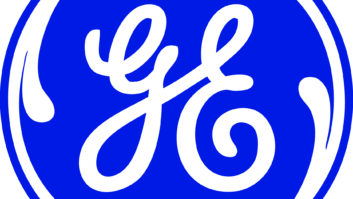NEW YORK —
TV or PC? That’s basically what it
came down to when we asked you, our readers, to
name the most significant development in the CE
industry since TWICE was born in 1986.
Your answer? Both. More than half of you, 62
percent, ranked high-speed Internet access to the
home as the most significant development in the
industry in 25 years. And since you could pick up
to three, 59 percent of you
also said HDTV and the
digital TV transition was
most important.
Those two developments
were the only two named on
more than half the surveys
we received when we held
our online poll in June.
But maybe that’s our fault.
Another choice down the
list — PCs become a massmarket
product — garnered
33 percent, and it appears
this may have split the PC
vote into two categories, a
chicken and egg dilemma
for the readers. Without the
rise of home PCs, broadband
service wouldn’t have
cracked the list, nor been
necessary.
But the results of the
survey, as well as the
comments from many of
the industry leaders in the
surrounding pages of this
issue of TWICE, make it
clear: the Internet changed
everything.
That theme is reflected in
another development that
earned significant votes.
Thirty-four percent of you
cited the effect of onlineonly
retailers on the brickand-
mortar business.
This would be a good time to point out that the majority
of those of you kind enough to answer our survey
identified yourselves as retailers (46 percent), and
an additional 10 percent as distributors: the people
who move the products. (See p. 8 for a breakdown
of respondents.) So it’s not a stretch to say that the
combined developments of the rise of the home PC,
home broadband and online retailing was the seismic
shift of the last 25 years.
In essence, you sold your customers PCs for their
homes, which spurred the Internet revolution, which
drove up demand for broadband in the home and
yielded a universe of online retailing.
And home PCs became the mother ship of myriad
growth categories: MP3 players, digital cameras,
routers and home-networking devices, hard drives
and storage. Fueling that mother ship is high-speed Internet access in the
home.
Since you are mostly
retailers, clearly no less (or
by the numbers, very slightly
less) of a seismic shift was
the digital TV transition and
HDTV.
After all, when you were
asked to name the most
significant product category
in the last 25 years,
you overwhelmingly named
HDTV/flat-panel TVs as No.
1.
Hundreds of millions of
HDTVs have been sold
and hundreds of billions
of dollars in revenue have
been generated (about
$186 billion in the U.S.
alone in 2011, predicts the
Consumer Electronics Association),
and the category
is still in growth mode, with
household penetration just
topping 70 percent in the
United States.
With HDTV, the CE industry did what it does best:
took something that people love and made it better.
TV has become more immersive, more useful and
more interactive. Gaming has become more inclusive
because of HDTV. Movie-watching is no longer
a night out with babysitting with the proliferation of
the home theater. And while 25 years ago futurists
predicted the death of the TV at the hands of the
home PC, here both products are, 25 years later, coexisting
peacefully, even thriving.
One can only speculate that the watershed
development when TWICE celebrates its 30th or
35th anniversary may be the spawn of both: the connected
TV.
In third place in our survey, at 37 percent, was the
emergence of Apple as a CE powerhouse.
Clearly Apple has been the best-run company in CE for years. Visionary engineering and groundbreaking
industrial design coupled with a deft marketing
hand took Apple from the cultish PC niche it cultivated
for two decades to the mass-market CE leader
it is today.
Using the iPod as its springboard, the company
has redefined the music industry, dominated the
smartphone category, created a whole class of
third-party providers by inventing the app market,
spawned a multi-billion dollar accessories industry for
its hardware and set the baseline for all future tablet
products.
The company has also infiltrated the custom-install
and home-control market where suppliers are including
iPod/iPhone/iPad interfaces into virtually every
component and replacing expensive remote controls
with apps.
Nowhere is Apple’s effect on the industry more
evident than at the annual International CES, which
the company doesn’t even feel the need to attend.
And now that A/V products for the custom-install
market are being reengineered with Apple in mind,
it is unlikely the company will decide to attend the
annual CEDIA Expo anytime soon. It will no doubt be
content, however, to be the elephant in the room.
In the context of most significant development,
some of the other choices on our survey seem understated.
One could argue that the transition from
physical media to downloaded/streamed media is
as significant as any other development, but it was
named by less than a third of respondents.
The increase in Far East manufacturing, led by
China, was cited by 21 percent of you. I’m going to
guess that all 17 percent of those surveyed who identified
themselves as manufacturers included this.
Further down the list were CE retail consolidation
and the rise of national retailers (12 percent),
the development of DVD and Blu-ray for video (10
percent), and CE manufacturers begin selling directly
to consumers (7 percent.)
One notable write-in was the rise of buying groups
to enable smaller retailers to compete effectively with
big-box stores. I think if we had included that as a
choice, it may have garnered significant votes among
our readers: a note to file away for our 30th.











